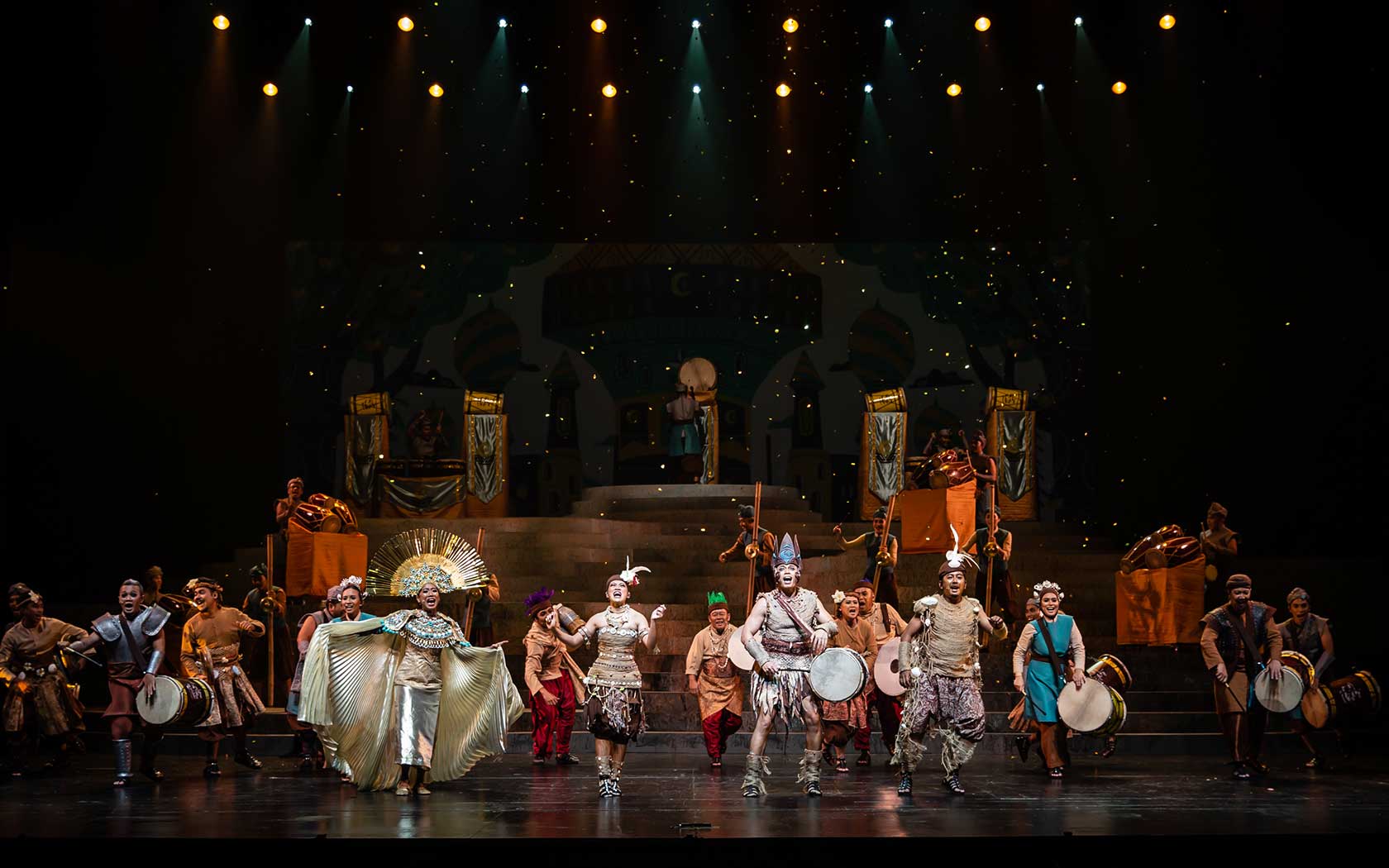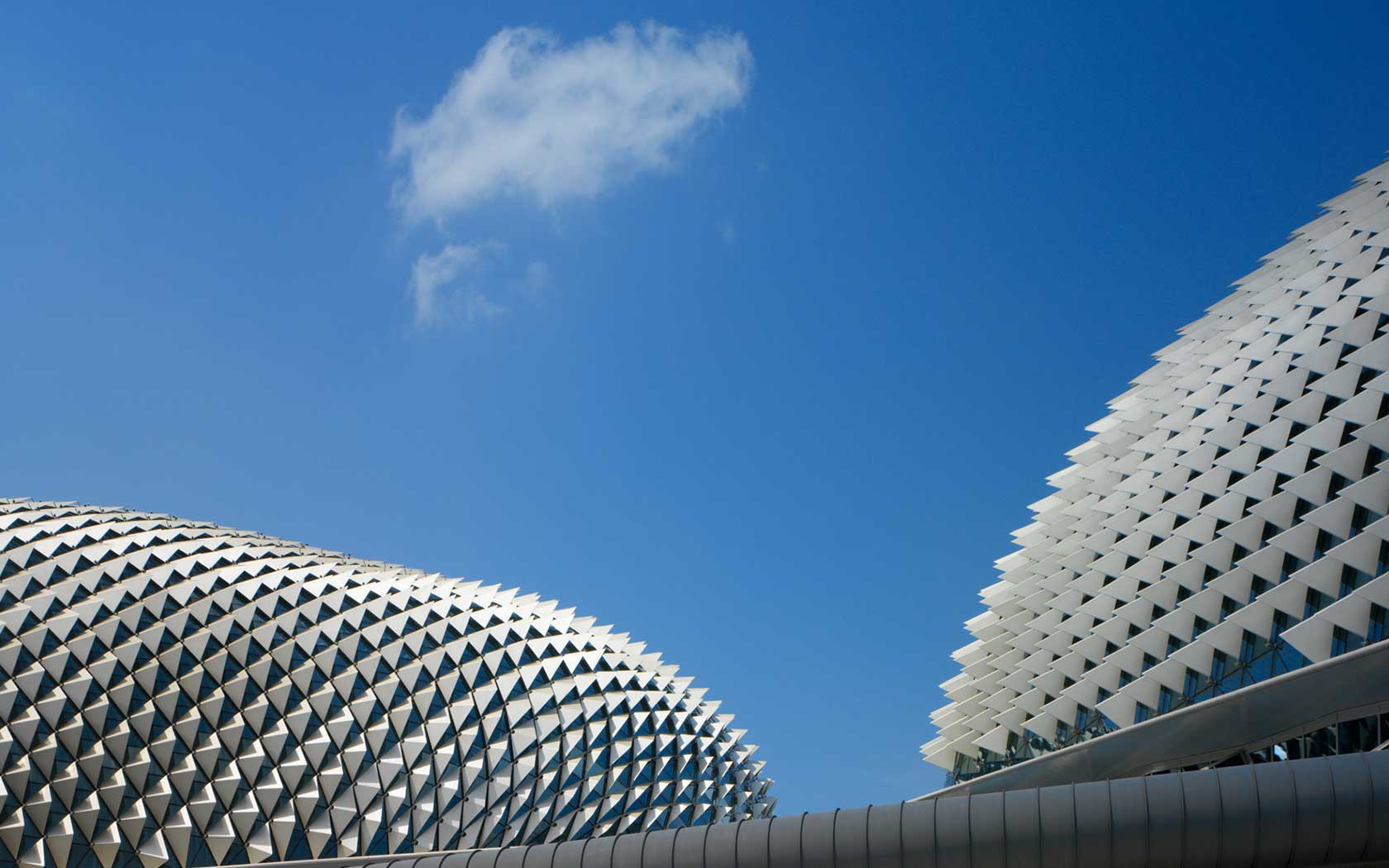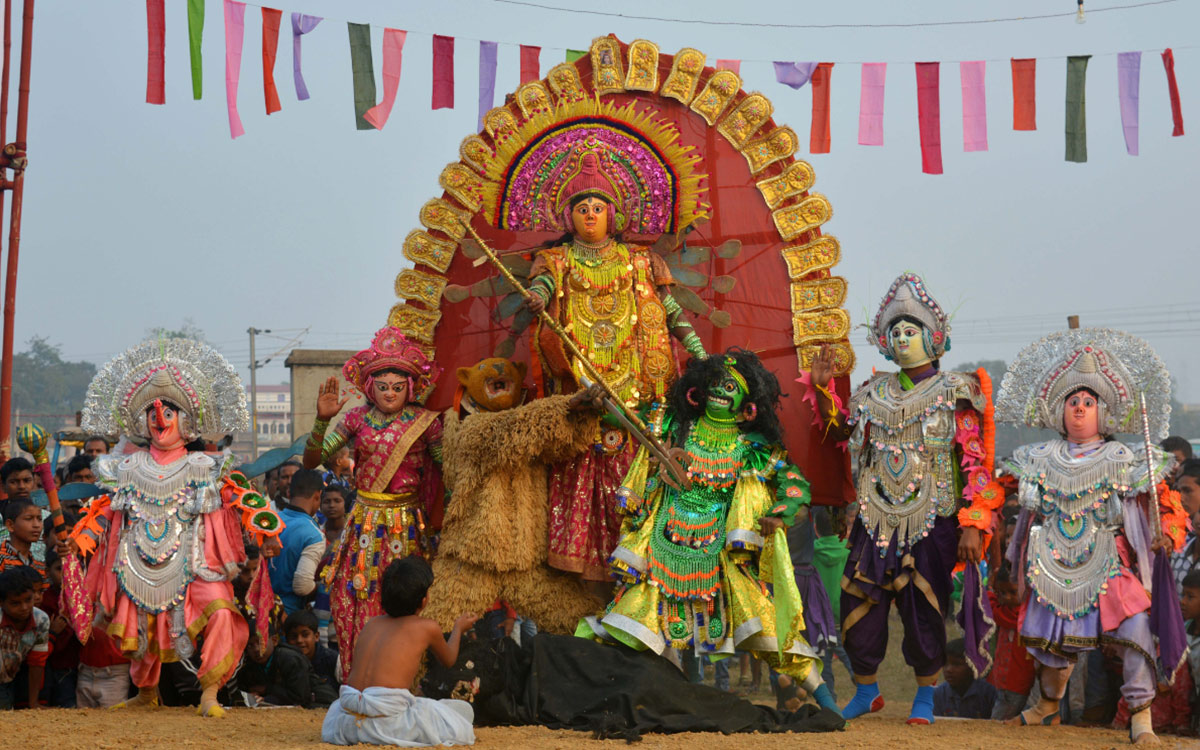Wearing colourful masks that are almost half the size of their bodies, chhau dancers jump and do somersaults effortlessly, energised by rustic folk music. The dancers execute high leaps and kicks, derived from martial arts, as part of this dance that evolved from a history of hunting and warfare. The reedy shehnai begins playing, followed by the dhol and dhamsa drums. A dancer wearing a mask with an elephant face enters, leaping and doing large somersaults. He personifies Lord Ganesha, the remover of obstacles and guiding deity in Hindu traditions. After the invocation and prayer, the performance narrative begins.
This is what one experiences when watching Purulia chhau, one of three variants of chhau dances that originates from the Purulia region in West Bengal. Purulia chhau is differentiated from the other two types of chhau through the dancers’ warrior-like open-legged stances and the larger-than-life masks.
The masks, constructed over weeks from paper, clay and cloth, are made by the troupe’s trusted craftsmen, according to the dancer’s facial measurements. Comprising two parts—the face mask and the adorning headdress enclosing it, the masks depict demons, deities, animals and people. Find out more about the intricate process of mask-making.
The narratives told through Purulia chhau are from the Ramayana and Mahabharata epics. One of the more common enactments is the slaying of the bull demon Mahisasur by the Goddess Durga, her husband Lord Shiva and their children (Lords Ganesha and Kartik, as well as the goddesses Lakshmi and Saraswati). A battle is waged, and with a hero’s fortitude or divine intervention, good vanquishes evil.
Since 2010, chhau has been inscribed in UNESCO’s Representative List of the Intangible Cultural Heritage of Humanity. Traditionally, the Purulia chhau dance was patronised by the Baghmundi royal family but now it is typically featured as a ritual performance during the Chaitra Parva, the first month of the year of the Hindu calendar and Shiv Gajan, a spring festival held in honour of Lord Shiva.














